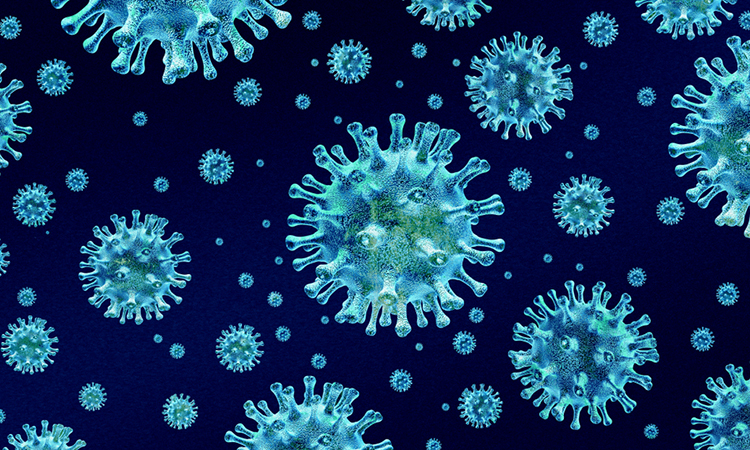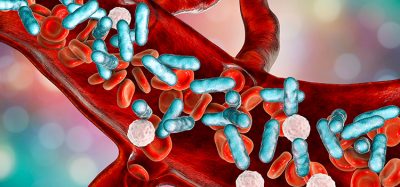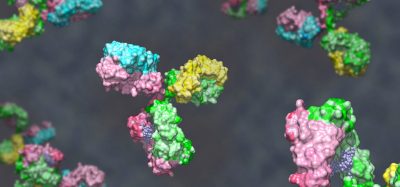Antibody drug target identified for influenza viruses
Posted: 4 January 2022 | Victoria Rees (Drug Target Review) | No comments yet
Researchers have found a small subset of antibodies that target a site at the base of the influenza virus hemagglutinin protein.


A team led by scientists at Weill Cornell Medicine, Scripps Research and the University of Chicago, all US, has identified an important site of vulnerability on influenza viruses – a site that future antibody therapies and vaccines against the virus should be able to target to prevent or treat infections by a broad set of influenza strains.
The scientists, whose results are published in Nature, found that a small subset of antibodies elicited by experimental and existing influenza vaccines target a site at the base, or anchor, of the virus’ hemagglutinin (HA) protein – an “epitope” whose significance was not recognised in prior influenza antibody studies.
According to the researchers, influenza virus particles are studded with copies of the HA protein, the main viral protein that antibodies can reach. This protein mutates over time so that it tends to differ from one influenza strain to the next – neutralising antibodies that target one strain’s HA will often not protect against other strains. For this reason, current “seasonal” influenza vaccines, which are designed to protect against only two or three prevalent strains, are considered limited in their effectiveness. Over the past two decades, scientists have been discovering relatively unvarying sites on the HA protein, to which antibodies can bind to neutralise the infectivity of a broad set of strains. These “broadly neutralising epitopes” are viewed as potential targets for future “universal” – or at least broadly protective – influenza vaccines and antibody-based therapies.
Reduce preclinical failures with smarter off-target profiling
24 September 2025 | 15:00PM BST | FREE Webinar
Join this webinar to hear from Dr Emilie Desfosses as she shares insights into how in vitro and in silico methods can support more informed, human-relevant safety decisions -especially as ethical and regulatory changes continue to reshape preclinical research.
What you’ll learn:
- Approaches for prioritizing follow-up studies and refining risk mitigation strategies
- How to interpret hit profiles from binding and functional assays
- Strategies for identifying organ systems at risk based on target activity modulation
- How to use visualization tools to assess safety margins and compare compound profiles
Register Now – It’s Free!
In the study, the team analysed the antibodies elicited by an experimental universal influenza vaccine then under development, as well as by seasonal influenza vaccines and natural influenza infections. The scientists found that a significant proportion of the elicited antibodies attached to the lower, stalk portion of HA – which in influenza viruses is generally less variable than the upper, head portion.
Analysis using electron microscopy revealed that some of the stalk-targeting antibodies – including a surprisingly high proportion of antibodies from the experimental vaccine recipients – bound to a previously overlooked epitope at the very bottom of the HA stalk, where the stalk is anchored to the viral membrane.
Tests in mice and in cell cultures indicated that these anchor epitope antibodies can neutralise a wide set of influenza strains containing the common H1 subtype of HA protein and also cross-react with the H2 and H5 strains.
The researchers also showed that humans’ antibody-making cells generally include some that are capable of producing anchor epitope antibodies.
“This will now be one of the key influenza epitopes that we target as we develop candidate universal influenza vaccines and antibody therapies,” said study co-senior author Dr Patrick Wilson, Weill Cornell Medicine.
“It is always very exciting to discover a new site of vulnerability on a virus because it paves the way for rational vaccine design,” said co-senior author Dr Andrew Ward, Scripps Research. “It also demonstrates that despite all the years and effort of influenza vaccine research there are still new things to discover.”
Related topics
Antibodies, Immunology, Molecular Targets, Target Validation, Vaccine
Related conditions
Influenza
Related organisations
Scripps Research, University of Chicago, Weill Cornell Medicine
Related people
Dr Andrew Ward, Dr Patrick Wilson








